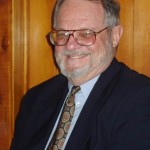 Title: Science and Environmental Air Policy: The First Thirty Years and the Next.
Title: Science and Environmental Air Policy: The First Thirty Years and the Next.
Abstract: Over the last thirty years, there has been a substantial contribution from the scientific community to the information needed for development of policies for the management of air quality. In the past, much of the input from scientific investigations has defined or characterized problems descriptively relevant to air quality, ranging from the effects of local exposure from source emissions to large scale phenomena including ozone accumulation, acid rain, and climate alteration.
Advances in science and technology have also contributed substantially to finding relatively simple, cost effective solutions to air pollution problems as seen initially to be mainly local in nature. With the recognition of multi-spatial and temporal scale phenomena, the identification and characterization of effects on humans, and vulnerable ecosystems has far reaching implications that have challenged scientists in their endeavours. Public policy generally has kept pace with the emergence of air quality issues, while sometimes precluding the flow of reliable technical input. Pre-emptive decisions pacing social changes faster than technical solutions increasingly run the risk of costly policy “mistakes”. As pressures continues build to reduce air pollution to levels comparable with estimates of natural or unmanageable background, the potential for misdirection in policy choices may be increasing along with dramatically higher costs for management options if technical input is inadequate. Future management options are likely to become increasingly limited unless increased emphasis is place on new replacement technologies, or industrial ecological considerations. The need for high quality scientific and technological information is becoming more and more critical to avoid policies that may be costly or misaligned. In the next thirty years, it is likely the policy development aimed at continued improvement in air quality will require a greatly enhanced understanding of environmental science and technology by decision-makers to insure effective socio-economic well-being, public health protection, and environmental protection envisioned by North American nations. While there may be surprises on the horizon, the major air related environmental issues appear to have been reasonably well defined by the late 20th century. Now there remains the challenge of creating in the next thirty years a greatly improved quantitative, risk based framework that will integrate the aspirations of national development with environmental protection envisaged in the ideals of “sustainability”. Conceptualization of this kind of paradigm began in the 1980s, but its practical fulfillment will require a much high level of scientific and technological sophistication than embodied in the past. Brochure
